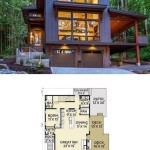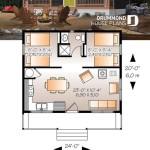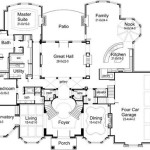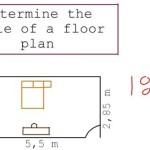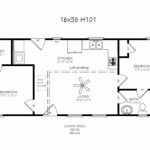House Floor Plans With Dimensions: A Comprehensive Guide
Understanding house floor plans, especially when they include dimensions, is critical for anyone involved in the real estate process, whether one is buying, selling, renovating, or building a home. A floor plan with dimensions provides a visual representation of the layout of a house, showcasing the size and arrangement of rooms. More than just a simple drawing, a dimensioned floor plan serves as a blueprint for understanding the spatial relationships within a property and making informed decisions related to design, furniture placement, and overall functionality.
Floor plans, in general, serve multiple purposes. For prospective homebuyers, they offer a clear sense of the spatial flow and potential of a property before physically visiting it. This can save time and effort by narrowing down options based on specific needs and preferences. For sellers, a well-prepared floor plan can highlight the positive attributes of the house and attract more potential buyers. Architects and contractors rely on dimensioned floor plans to accurately estimate materials, plan construction, and ensure that the final product aligns with the client's vision. Interior designers use them to develop space planning strategies and determine appropriate furniture sizes and layouts.
The inclusion of dimensions on a floor plan elevates its utility significantly. Without dimensions, a floor plan provides only a relative sense of space. Dimensions provide concrete measurements, allowing one to calculate square footage, determine whether furniture will fit in a room, and assess the overall practicality of the layout. Accuracy in these dimensions is paramount; even small discrepancies can lead to significant errors in planning and execution, resulting in costly mistakes during renovations or construction projects.
This comprehensive guide will delve into the various aspects of house floor plans with dimensions, covering the key elements, understanding different types of dimensions, interpreting common symbols, and utilizing these plans effectively for various purposes. The objective is to equip the reader with the knowledge and skills necessary to confidently navigate and interpret these essential documents.
Understanding the Key Elements of a House Floor Plan with Dimensions
A house floor plan with dimensions contains several essential elements that work together to convey a complete picture of the property's layout. It is crucial to understand each element to effectively interpret the plan and extract the necessary information.
Firstly, the
walls
are typically represented by thick lines, clearly delineating the boundaries of rooms and the exterior of the house. The thickness of the lines may vary depending on the scale of the plan, but the representation should be consistent throughout. Interior walls are usually thinner than exterior walls to differentiate between load-bearing and non-load-bearing structures. On dimensioned floor plans, the overall thickness of the wall is accounted for in the measurements.Doors and windows
are represented by specific symbols that indicate their location, size, and swing direction. A door is typically depicted as an arc showing the direction in which it opens. Window symbols vary but often include three parallel lines, with the center line representing the glass, and the outer lines representing the window frame. The dimensions usually indicate the width of the door or window opening.Room labels
clearly identify the purpose of each space, such as "Living Room," "Bedroom," or "Kitchen." These labels are usually positioned within the room and provide immediate context for the layout. In addition to the labels, thesquare footage
of each room, and sometimes the overall square footage of the house, may be included, providing a quantitative measure of the space available.Dimensions
are the most critical element of a dimensioned floor plan. They are typically represented by lines with arrowheads at each end, indicating the length of the distance between two points. The numerical value of the dimension is usually placed directly above or below the line. Dimensions can indicate the length and width of rooms, the placement of windows and doors, and the overall size of the house. Different types of dimensions, such as interior dimensions, exterior dimensions, and overall building dimensions, may be included to provide a comprehensive understanding of the spatial relationships.Fixtures and appliances
are often represented by standardized symbols. For example, a toilet is depicted by an oval or a stylized representation of the bowl. Sinks, bathtubs, and showers are also shown with specific symbols. In the kitchen, appliances such as refrigerators, ovens, and dishwashers are represented by rectangular shapes with their respective labels or symbols. These symbols help visualize the placement of essential amenities within the house.Finally,
structural elements
, such as columns, load-bearing walls, and staircases, are clearly indicated on the floor plan. Columns are typically represented by circles or squares, while staircases are shown with a series of steps and an arrow indicating the direction of ascent. These elements are essential for understanding the structural integrity of the house and planning any potential modifications.Interpreting Dimensions and Symbols
Accurately interpreting the dimensions and symbols on a house floor plan is crucial for making informed decisions. Understanding the different types of dimensions and the meaning of common symbols allows one to extract valuable information about the property's layout and potential.
Dimensions are typically presented using a specific unit of measurement, such as feet and inches (e.g., 12'-6") or meters and centimeters (e.g., 3.8m). It is essential to pay attention to the unit of measurement to avoid miscalculations. Dimensions can be classified into several categories including:
Overall Dimensions:
These dimensions indicate the total length and width of the house, providing a general sense of its size and footprint. These are usually external dimensions, representing the outer boundaries of the building.
Interior Dimensions:
These dimensions specify the length and width of individual rooms, allowing one to calculate the square footage and assess the space available for furniture and other items. These are usually measured from the inside of the walls.
Wall Thickness:
Dimensions may also indicate the thickness of walls, which is important for understanding the structural composition of the house and planning any modifications.
Door and Window Dimensions:
These dimensions specify the width and height of doors and windows, allowing one to determine the size of openings and plan for curtains, blinds, or other window treatments. They often indicate the "rough opening" size, which is the size of the hole in the wall before the door or window frame is installed.
Placement Dimensions:
These dimensions indicate the distance between various elements, such as the distance of a window from a corner or the spacing between two appliances. This information is essential for precise planning and ensuring that all elements fit correctly within the space.Symbols used on floor plans can vary slightly depending on the architect or designer, but some common symbols are universally recognized:
Doors:
Depicted as an arc indicating the swing direction and a line representing the door itself.Windows:
Represented by three parallel lines, with the center line representing the glass.Toilets:
Shown as an oval or stylized representation of the bowl.Sinks:
Represented by a circular or oval shape with a tap symbol.Stairs:
Depicted by a series of steps with an arrow indicating the direction of ascent.Electrical Outlets:
Shown as a circle with two or three lines inside, representing the number of receptacles.It is crucial to familiarize oneself with these symbols to effectively interpret the information presented on the floor plan. If unsure about a particular symbol, consulting the plan's legend or key can provide clarification. The legend usually lists all the symbols used and their corresponding meanings.
Utilizing House Floor Plans with Dimensions Effectively
House floor plans with dimensions are powerful tools that can be used effectively for various purposes, from buying and selling real estate to planning renovations and designing interior spaces. Understanding how to utilize these plans can save time, money, and effort.
Real Estate Transactions:
For prospective homebuyers, floor plans with dimensions provide a comprehensive overview of the property's layout and potential. They allow one to visualize the flow of space, assess the size of rooms, and determine whether the house meets their specific needs and preferences. By carefully studying the floor plan, buyers can identify potential issues, such as small bedrooms or a poorly designed kitchen, before committing to a purchase. For sellers, providing a detailed floor plan with accurate dimensions can attract more potential buyers and showcase the positive attributes of the property.
Renovation and Remodeling:
Floor plans with dimensions are essential for planning renovation and remodeling projects. They provide contractors and designers with the necessary information to accurately estimate materials, plan construction, and ensure that the final product aligns with the client's vision. By carefully studying the floor plan, one can identify potential challenges, such as load-bearing walls that cannot be removed or plumbing and electrical systems that need to be relocated. Accurate dimensions are crucial for ordering materials and ensuring that everything fits correctly within the space.
Interior Design and Space Planning:
Floor plans with dimensions are invaluable for interior designers and homeowners looking to optimize their living spaces. They allow one to experiment with different furniture arrangements, determine the appropriate size of furnishings, and assess the overall functionality of the layout. By drawing furniture to scale on the floor plan, one can visualize how it will fit within the space and avoid costly mistakes. Floor plans also help in planning for lighting, electrical outlets, and other essential amenities.
Accessibility and Universal Design:
Floor plans with dimensions are particularly useful for assessing the accessibility of a house and planning for universal design features. By studying the dimensions and layout, one can identify potential barriers for people with disabilities, such as narrow doorways, steep stairs, or limited turning space. Floor plans can be used to plan for modifications, such as widening doorways, installing ramps, or creating accessible bathrooms. The dimensions ensure that these modifications meet the necessary requirements for accessibility.
Documentation and Record-Keeping:
House floor plans with dimensions serve as valuable documentation for property owners. They provide a record of the house's layout and dimensions, which can be useful for future renovations, insurance claims, or property appraisals. Keeping a copy of the floor plan in a safe place ensures that the information is readily available when needed.In summary, understanding and effectively utilizing house floor plans with dimensions is essential for anyone involved in the real estate process. Whether one is buying, selling, renovating, or designing a home, these plans provide invaluable information that can save time, money, and effort. By carefully studying the floor plan, interpreting the dimensions and symbols, and utilizing this information for informed decision-making, one can ensure that their housing needs are met.

How To Draw A House Plan Step By Comprehensive Guide Where Civil Engineering And Architecture Converge

Understanding Row House Plan A Comprehensive Guide

How To Draw House Blueprints Detailed Guide Cedreo

Diy Floor Planning Design A Comprehensive Guide Sketch My Plot

How To Draw House Cross Sections

Draft Architectural 2d Floor Plans With 3d Sketchup

Key Factors For Creating Residential Construction Documents

Plan Archives Digivillaplans

3d Floor Plans North Port Florida

Floor Plan Symbols A Comprehensive Guide To Reading Your House Plans
Related Posts

